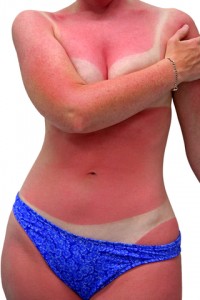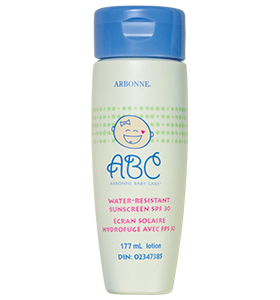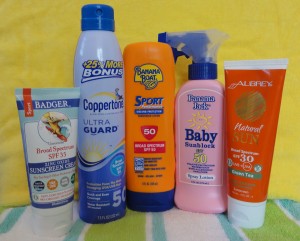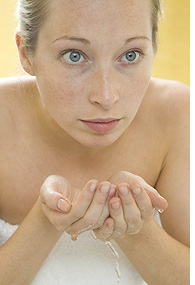A sun-loving yogi (and former beach bunny) reminds us to stay safe in the summer sun
by Reyna Gonzalez
I love the sun! I love feeling the warmth of the sun’s rays on my face, then feeling that warmth radiating down the front of my body. Whether it’s a spring day or noontime in the middle of winter, basking in the sun reminds me of my youthful, carefree days on the beaches of Massachusetts, when I thought nothing of slathering my body with baby oil to enhance the power of the sun.
Beach Bunny Blues
Using baby oil and tanning lotions were common practices in the seventies. Back then, it seemed that thick, pasty sunscreens were only for people with fair skin. I don’t recall my doctor ever telling me that I needed to protect my olive skin from excessive sun exposure.
One hot summer day on a beach on Cape Cod, I found out the hard way that my naturally tan skin was not immune to painful sunburn. After that, I became a little cautious about sun exposure. I followed some of the precautions that my fair-skin friends  used, such as avoiding sunbathing at times when the sun’s rays are the strongest (between 10 am and 4 pm). But I didn’t like wearing hats, and still would not use sunscreen. It wasn’t until years later, when I had my first child and wanted to protect his delicate skin, that I became aware of the dangers from overexposure to the sun.
used, such as avoiding sunbathing at times when the sun’s rays are the strongest (between 10 am and 4 pm). But I didn’t like wearing hats, and still would not use sunscreen. It wasn’t until years later, when I had my first child and wanted to protect his delicate skin, that I became aware of the dangers from overexposure to the sun.
That sunburn that I got as a teenager was skin poisoning, and even one bad sunburn can increase your risk for skin cancer. The warmth of the sun that I enjoy so much is from the sun’s rays, or ultraviolet radiation (UV), the same radiation used in tanning booths.
Rays of Our Lives
The sun’s rays are classified by their wavelengths: UVA, UVB, and UVC. UVC is the most damaging of the three, but it doesn’t reach the surface of the Earth. According to the Skin Cancer Foundation, UVA and UVB rays have both positive and negative effects. On the “bright” side, they are a source of Vitamin D, which is essential for strong bones and a healthy immune system. Conversely, these UV rays can lead to premature skin aging, eye damage (including cataracts), and skin cancer. Although the ozone layer of the Earth’s atmosphere absorbs UVA and UVB rays, its depletion leaves us more exposed.
I was right about my olive skin having some natural protection against the sun: the more melanin (skin coloring pigment) in your skin, the lower your risk of developing sunburn. However, the National Cancer Institute warns that anyone, regardless of  whether they are susceptible to sunburn, is at risk for skin cancer caused by the sun’s UV rays.
whether they are susceptible to sunburn, is at risk for skin cancer caused by the sun’s UV rays.
My days of carefree sun bathing on the beach have long since passed. I have not only embraced wearing hats, but also using sunscreen. As an independent consultant with Arbonne International (a maker of skincare products), I chose to add Arbonne Baby Care, a broad-spectrum SPF 30 sunscreen, to my sun protection regimen. There are many sunscreens available on the market, so choose the brand that seems best for you and your family.
Pass the Sunscreen
In general, there are two types of sunscreen: chemical and physical. (Some sunscreens combine elements of both.) The overview below highlights key characteristics of both types. Note that while some watchdog groups have raised concerns about the long-term effects of some ingredients found in sunscreens, organizations like the Skin Cancer Foundation and the American Cancer Society maintain that the biggest danger our skin faces is exposure to the sun.
Chemical Sunscreens
- Synthetic UV filters protect skin by penetrating the skin and absorbing the sun’s harmful rays
- Tend to be odorless and colorless with a thin consistency
- Effective protection begins approximately 20 minutes after application
- Active ingredients are chemicals such as oxybenzone, avobenzone, octocrylene, homosalate, and octisalate
- Cons: chemical ingredients may irritate sensitive skin; some research has linked chemical ingredients to cancer risk and hormone disruption
- Brands include Banana Boat, Neutrogena, and Coppertone
Physical Sunscreens
- Natural UV filters protect skin by coating the skin and blocking the sun’s harmful rays
- Tend to be thick, may leave a white tint on skin
- Protect upon application
- Active ingredients are the minerals titanium dioxide and zinc oxide
- Many brands certified as cruelty-free by LeapingBunny.org
- Cons: concerns have been raised that extra-small “nano-particles” found in some of these sunscreens may ultimately penetrate and damage skin
- Brands include Aubrey Organics, California Baby, Block Island Organics, Badger (all these companies offer cruelty-free products)
Whether they contain chemical or physical ingredients, sunscreens with a Sun Protection Factor–or SPF–of 15 or higher are believed to do an excellent job of protecting against skin damage from UVB, the main cause of sunburn. A rating of SPF 15 means that the sunscreen filters out about 93% of all incoming UVB rays. An SPF of 30 filters out about 97% of the rays, but no sunscreen can block UV rays 100%.
Sunscreens labeled with the term “broad-spectrum” protect skin from both UVA and UVB rays. Per FDA guidelines, makers of broad-spectrum sunscreens with an SPF of 15 or higher may claim that their product helps protect against skin cancer and early signs of skin aging if used as directed with other protective measures.
Prevention Is the Best Medicine
While sunscreen is essential for skin cancer prevention, organizations like the American Cancer Society and the Skin Cancer Foundation emphasize that sunscreen alone is not enough for summer sun safety. To stay safe, remember to incorporate the following steps into your skin protection regimen:

Brazilian beach volleyball players give a thumbs up to sun protection!
- Limit sun exposure, especially between the hours of 10 am and 4 pm, when the rays are the most intense
- In addition to using a sunscreen with broad-spectrum protection and an SPF of 30 or higher, protect skin from UV rays with long-sleeved shirts and a broad hat that shades the face, neck, and ears
- Use UV-blocking sunglasses to protect your eyes
- Beach bunnies, bums, and volleyball players should choose a sunscreen that’s water-resistant, and be sure to reapply after swimming or excessive sweating
- Don’t forget to protect skin on hazy days, as UV rays penetrate the clouds
It’s good to know that while I can no longer take basking in the sun for granted, I can take steps to protect my skin. Now that summer has arrived, I am looking forward to eating outdoors, taking walks, playing tennis, and perhaps spending a day or two on the beach. (And yes, I’ll bring a hat!) By making sure I follow the recommended tips for safer sun exposure, I know that I can continue to enjoy the warmth of the sun that I love so much for years to come.
|
For Further Reading For more information on the effects of UV rays, summer sun safety, and skin cancer prevention, check out the following resources: The American Cancer Society: Be Safe in the Sun www.cancer.org The National Cancer Institute: Skin Cancer Prevention www.cancer.gov Skin Cancer Foundation: Skin Cancer Information www.skincancer.org |
A certified yoga teacher, Reiki Master, and an Independent Consultant with Arbonne International, Reyna Gonzalez enjoys sharing her love for healthy living. In her spare time, Reyna enjoys tennis, tango, and spending time with her two sons and life partner David. You can contact Reyna through her website, reynagonzalez.arbonne.com.
Photo credits: beach yoga © Dimaberkut | Dreamstime.com; sunburned woman © Amy Walters | Dreamstime.com






 As an esthetician, I see many people who wish their skin could look better without a lot of cost and effort. To brighten your facial skin, you need to get back to the basics. The most expensive products in the world won’t work optimally unless these four simple steps are taken care of: cleansing, toning, moisturizing and, during the day, using sunscreen.
As an esthetician, I see many people who wish their skin could look better without a lot of cost and effort. To brighten your facial skin, you need to get back to the basics. The most expensive products in the world won’t work optimally unless these four simple steps are taken care of: cleansing, toning, moisturizing and, during the day, using sunscreen.